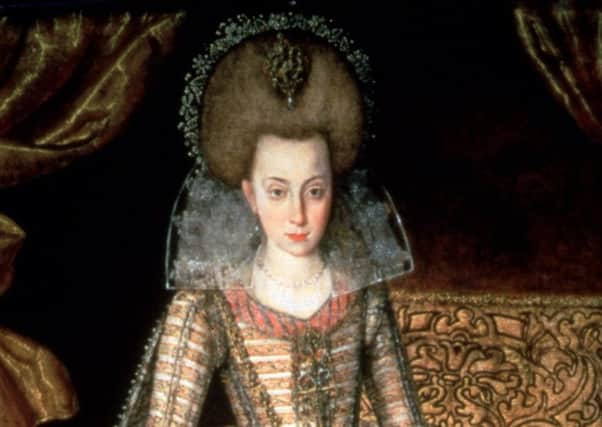Book review: Daughters of the Winter Queen, by Nancy Goldstone


Elizabeth was a remarkable woman, accounted a beauty, and possessed of great charm. The ambassador Sir Henry Wotton wrote a poem in which be compared her to the Moon, outshining “the meaner beauties of the night” – a conventional sentiment, but a good poem. Although Nancy Goldstone’s title refers only to Elizabeth’s daughters, it is also a biography of Elizabeth herself and her sons are not neglected. The best known of them is Rupert, commander of his uncle Charles I’s cavalry in the Civil War, later an admiral after the Restoration of his cousin Charles II and, as a scientifically-minded Prince with his own laboratory, an early Fellow of the Royal Society.
Elizabeth’s children were all well-educated, and had both artistic and intellectual ability. Her eldest daughter, also Elizabeth, was a friend and pupil of Descartes, the youngest, Sophia, of Leibniz. Sophia, who would live to be 83, was the mother of George, Elector of Hanover, who became George I of Great Britain on the death of Queen Anne in 1714. Sophia would indeed have been Anne’s successor if she had lived a few months longer.
Advertisement
Hide AdAnother daughter, Louise, was a talented portrait painter. She also fell in love with the Marquis of Montrose during his years of exile after the Battle of Philiphaugh. Her mother may have been in love with Montrose too; she certainly admired him. She hung his portrait in her cabinet “to fright away ‘the Brethren’” – as she called the Covenanters. Louise converted to Catholicism, to her mother’s considerable irritation. She eventually became Abbess of Maubuisson, 20 miles northwest of Paris – though it seems she spent little time with the nuns under her authority. Her elder sister, Elizabeth, also became an abbess, in her case a Lutheran one. Marriage made the fourth daughter, Henrietta Maria (named by Elizabeth after Charles I’s queen, her French sister-in-law whom she disliked and distrusted), a Princess of Transylvania, which is surely remarkable.
Elizabeth herself survived decades of defeat, disappointment, and debt – she was often uncertain of how to feed her household – and did so with admirable resilience and cheerfulness. Undoubtedly, like so many Stuarts, she had great charm. She was a fond mother, sometimes demanding, quite often carelessly neglectful. Her daughters were known to complain that she had more time for the little dogs that habitually swarmed over her bed than she had for them, and I daresay there were right. Benign neglect is, however, often a good thing; her children went their own way, finding their own interests, developing their own personalities.
Group biographies are always difficult to write, a way having to be found of sustaining interest as you dot about, switching from one person’s story to another’s. On the whole, Nancy Goldstone, author of other books of this sort –The Rival Queens, set in the last decades of the Valois dynasty in France, for example – manages the switch. Her claim that the story of Elizabeth and her four remarkable daughters represents “the enduring legacy of Mary, Queen of Scots” seems to me fanciful. Still, you may agree with Goldstone that “it is impossible to look at her granddaughter Elizabeth Stuart and not see Mary’s courage, intelligence, strength of mind and absolute unwillingness to surrender.” Perhaps. Never mind, this is an enjoyable book, a good piece of popular history – that is, the kind of history that people read for pleasure.
Daughters of the Winter Queen, by Nancy Goldstone, Wiedenfeld & Nicolson, 480pp, £20